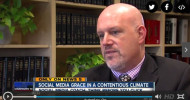- Home
- News
- Features
- Topics
- Labor
- Management
- Opinions/Blogs
- Tools & Resources
Home » Archives by category » Uncategorized (Page 2)
The Value of Family-Related Benefits in Financial Literacy Programs
08/02/2018 Comments Off on The Value of Family-Related Benefits in Financial Literacy Programs

With job candidates no longer focusing solely on salary but also on the benefits accompanying a job offer, employers are seeking new benefits to attract and retain talented employees.
Family-related benefits, such as paid parental leave for both mothers and fathers, adoption benefits and child care flex spending accounts, are becoming more popular in workplaces. However, there is one family-related benefit that is not discussed as often, yet it can make a tremendously positive impact in the lives of your employees’ children.
Financial literacy education for children is desperately needed in our country. Only 17 states require high school students to take a course in personal finance, according to the Council for Economic Education’s 2016 Survey of the States.
Parents know they should be doing more to educate their children on personal finance topics, but they are either reluctant or don’t know how to talk to their children about money.
Employers’ Role in Financial Literacy for Children
Children form most of their financial behaviors by age 7, according to the University of Cambridge. These deep-rooted beliefs will shape their lives as they grow into adulthood and will play a major role in how they deal with finances. Moreover, their longstanding effects will last long past adulthood. Their formed financial beliefs can affect their children, grandchildren and future generations past them. How parents talk to their children about money is a boundless matter.
Despite this information, nearly 75 percent of parents are reluctant to talk to their children about finances, according to a 2015 study conducted by T. Rowe Price.
Employers are in an ideal position to offer family-focused financial literacy workshops as a benefit to the parents, and even grandparents, in their organization. After all, 93 percent of companies intend to focus on the financial wellbeing of their employees in a way that extends beyond retirement, according to an Aon Hewitt survey.
Family-focused financial education is becoming an increasingly popular benefit for employers to offer. Just as employees find value in personal financial education offered by their employers, this type of family-focused financial training empowers them to help them raise financially fit children.
Typically hosted by a qualified financial consultant, these types of educational programs provide employees with simple yet effective ways to teach important financial lessons to children of all ages through everyday conversations and activities.
Furthermore, employers can consider allowing employees to bring spouses and co-parents to the event, as its added value will further benefit the entire family. In these instances, after-hours events are a great option for employers, as working spouses will have the opportunity to attend. Companies can even arrange for child care services during such events, making them more easily accessible to families with young children.
The Value of Helping Employees Become Better Teachers
As we enter what’s being referred to as “The Great Transfer of Wealth,” the need to teach children how to become financially responsible adults will become increasingly important to parents.
For one, the baby boomer generation is set to transfer $41 trillion in assets to their Gen X and millennial children during this transfer, the Boston College Social Welfare Research Institute found. This impending transfer of wealth has left many families wondering how they should have meaningful conversations with their heirs to ensure inheritances are safeguarded.
Second, parents often do not feel comfortable discussing finances with their children. The root of this problem is that many parents do not even know how to have these conversations, meaning a considerable amount of money will be put in the hands of potentially fiscally incompetent children who are at risk of making poor money management choices with their inheritances.
Sixty percent of unsuccessful transfer of wealth is due to a lack of communication and trust, according to Roy Williams and Vic Preisser, the authors of the book “Preparing Heirs.” This further validates the need for such education.
How Employers Benefit
Though it is quite obvious why parents and grandparents alike require this education, it might not be as apparent why employers should be the ones providing it.
However, there are numerous reasons why companies would benefit from offering this education to their employees. Many studies have found that there’s a direct correlation in the workplace between financial distress and productivity. Stressed employees are often less productive, take time off from work to deal with their finances, and are more likely to cite health issues caused by financial stress, according to PricewaterhouseCoopers. When financial education is offered, employees are more likely to become fiscally responsible and have these stressors affecting work eliminated.
These many findings prove why there’s such a strong case for family financial literacy programs in the workplace. As employers are gradually adding new family-related benefits, it’s important they keep in mind all aspects of a family’s wellbeing, including their financial health.
Kyle Sanders in the owner and lead financial consultant of Legacy Consultants Group, a financial advisory firm based in Indianapolis. Comment below or email editors@workforce.com.
The post The Value of Family-Related Benefits in Financial Literacy Programs appeared first on Workforce Magazine.
Continue reading …Tesco faces £4bn equal pay claim from women staff
07/02/2018 Comments Off on Tesco faces £4bn equal pay claim from women staff100 female staff are taking Tesco to court, claiming they are being paid less than men doing comparable jobs.
Continue reading …What Is Your Profession Doing to Combat Harassment? Mine Appears to be Doing a Lot
07/02/2018 Comments Off on What Is Your Profession Doing to Combat Harassment? Mine Appears to be Doing a Lot

The policy-making body of the American Bar Association has adopted a formal resolution that urges legal employers to prohibit, prevent, and promptly redress sexual harassment and retaliation claims.
Moreover, to make sure that law-firm leaders are paying close enough attention, Resolution 302 [pdf] also urges that firms adopt measures to ensure that the heads of law firms are informed of the financial settlements of such claims.
The resolution contains the following key measures:
-
- Inclusion of “gender,” “gender identity,” and “sexual orientation” in the definition of “sex.”
-
- Encouragement all employers to disseminate a clear statement that all harassment, including harassment based on sex, will not be tolerated.
-
- Confirmation that the harassment policy applies to conduct by anyone at work, or at or in connection with any work related function.
-
- Creation of regular and effective training programs.
-
- Provision of alternative methods for reporting violations of the policy, including at least one anonymous method.
-
- Communication, at the start of employment, of the process to report harassment to a government agency.
-
- Investigation of all complaints in a prompt, competent, fair, thorough, and objective manner, to include a report to the complainant at the end of the investigation.
-
- Implementation of corrective actions to prevent and correct unlawful harassment or retaliation in the workplace, to include the restoration of lost wages or bonuses to the complainant, and disciplinary action up to and including termination of the accused.
- Prohibition of retaliation against complainants and witnesses.
I quibble with some of these. For example, I typically do not think it’s a good idea to provide the investigatory report as part of the closure of the investigation. I also do not include the EEOC’s phone number and URL in harassment policies I draft.
Broadly speaking, however, I’m proud that my profession is doing something positive to shift the narrative from, “#MeToo I’ve been harassed,” to “#MeToo I’m doing something about it.”
So ask yourself, what are you doing? Are you part of the harassment solution or part of the harassment problem?
Jon Hyman is a partner at Meyers, Roman, Friedberg & Lewis in Cleveland. Comment below or email editors@workforce.com. Follow Hyman’s blog at Workforce.com/PracticalEmployer.
The post What Is Your Profession Doing to Combat Harassment? Mine Appears to be Doing a Lot appeared first on Workforce Magazine.
Continue reading …Employers Face a Rise in Biometric Privacy Lawsuits
07/02/2018 Comments Off on Employers Face a Rise in Biometric Privacy Lawsuits

Biometric privacy lawsuits could be on the rise soon among employers.
You can hardly pick up a smartphone these days without reading about — and experiencing — how biometric authentication technology is changing our lives and businesses.
Finger and facial recognition have become so commonplace that you might not think twice before asking your employees to authenticate their time using similar technologies, especially because traditional punchcard systems can be inefficient and vulnerable to fraud or abuse.
But a recent spike in litigation illustrates the legal risks to introducing biometric authentication devices and practices to your business. More than 50 companies are now defending class-action lawsuits under the Illinois Biometric Information Privacy Act, or BIPA, which provides rules for the disclosure, retention and protection of biometric data, and permits any person aggrieved by a violation to recover $1,000 for each negligent violation and $5,000 for each intentional violation.
Texas and Washington have passed similar laws, and New York has a labor law governing the collection of biometric information, but unlike BIPA they do not create an individual right to sue.
BIPA governs “biometric identifiers” and “biometric information.” Biometric identifier means “a retina or iris scan, fingerprint, voiceprint, or scan of hand or face geometry.” Biometric information means “any information … based on an individual’s biometric identifier used to identify an individual.”
To comply with BIPA, companies that collect or possess biometric identifiers or information must satisfy six statutory provisions.
Courts Interpreting BIPA
Though BIPA was enacted in 2008, it was not the subject of litigation until the past few years, and the most dramatic uptick in filings occurred in late 2017. The majority of those actions involve the same basic factual situation: a current or former employee is suing because they scanned their finger to clock in and out of work.
But the most important BIPA case so far, decided Dec. 21, has a slightly different context. In Rosenbach v. Six Flags, the plaintiff, Stacy Rosenbach, sued Six Flags Entertainment Corp. and Great America LLC under BIPA for scanning her son’s fingerprints to verify his identity as a season pass holder. The Illinois Appellate Court ruled that a plaintiff “must allege some actual harm” to sue under BIPA, adding that “[i]f a person alleges only a technical violation of [BIPA] without alleging any injury or adverse effect, then he or she is not aggrieved and may not recover[.]”
The Illinois Appellate Court’s ruling makes sense. First, looking to BIPA’s language, only a “person aggrieved” is permitted to sue, strongly indicating that a plaintiff must allege an actual injury. Second, from a practical perspective, the vast majority of plaintiffs acknowledge voluntarily scanning their own fingers. Even so, this decision is poised to have far-reaching implications, and it seems likely that the authoritative interpretation of “person aggrieved” will ultimately come from a future decision of the Illinois Supreme Court.
With all this in mind, what can you do to minimize the risk and expense that biometric privacy class actions pose to your business?
First, determine whether any biometric privacy laws apply to your business. This may require consulting with an attorney familiar with biometric privacy laws and professionals who understand your underlying technologies. Even if your business does not collect biometric data from Illinois, Washington, Texas or New York residents, consider whether it might in the future or whether similar laws may be adopted in applicable jurisdictions (Michigan and Connecticut are considering similar laws). Second, if biometric privacy laws apply, understand the requirements and get into compliance. Regardless of whether you have been sued, you will need to determine whether your existing policies and practices satisfy some or all of the biometric privacy legal requirements. For those policies and practices that are noncompliant, you will need to design and implement new ones. Finally, if you have been sued, then in addition to assessing and remediating compliance issues, your attorney will need to consider employing certain strategies inherent in these cases with the potential to reduce litigation costs and increase your chance of success.
The recent spate of BIPA lawsuits represents a coordinated effort by the plaintiff’s bar to catch corporate legal departments off guard. Nevertheless, it is less likely an anomaly than a sign of things to come as biometric technologies continue to pervade our personal and business lives. Companies would do well to assess their technological and legal options and vulnerabilities now and to maintain vigilance over this emerging field in the future.
Anna S. Knight is administrative managing partner and Patrick J. Castle is an attorney with Shook, Hardy & Bacon in Chicago. Comment below or email editors@workforce.com.
The post Employers Face a Rise in Biometric Privacy Lawsuits appeared first on Workforce Magazine.
Continue reading …The 4th Nominee for the Worst Employer of 2018 is … the (in)Humane Society Harasser
06/02/2018 Comments Off on The 4th Nominee for the Worst Employer of 2018 is … the (in)Humane Society Harasser
The fourth nominee for the worst employer of 2018 is the Humane Society of the United States, which last month voted to retain its CEO despite an internal investigation that identified and corroborated three complains of sexual harassment against him.
From The Washington Post:
The internal investigation, which was conducted by Washington law firm Morgan Lewis last month, detailed the stories of three women who said Pacelle harassed them, with complaints dating to 2005.
The nonprofit group also offered settlements to three other workers who said they were dismissed or demoted after speaking up about Pacelle’s alleged sexual misconduct, according to a memo describing the law firm’s findings. …
The Humane Society investigation interviewed 33 witnesses, including Pacelle, outlining complaints from a former intern who said Pacelle kissed her against her will in 2005; a former employee who said he asked to masturbate in front of her and offered her oral sex in a hotel room in 2006; and a former employee who said he stopped by her office late one night in 2012 and asked her to salsa dance with him.
If you’re curious, Politico outlines all of the sordid allegations. Under the force of public pressure and the threats of many high-dollar donors, Pacelle has since resigned.
If you value your CEO more than the rights of your employees to be free from harassment, you might be the worst employer of 2018.
Previous nominees:
The 1st Nominee for the Worst Employer of 2018 Is … the Holy Harasser
The 2nd Nominee for the Worst Employer of 2018 Is … the Arresting School Board
The 3rd Nominee for the Worst Employer of 2018 Is … the Camera Creep
Jon Hyman is a partner at Meyers, Roman, Friedberg & Lewis in Cleveland. Comment below or email editors@workforce.com. Follow Hyman’s blog at Workforce.com/PracticalEmployer.
The post The 4th Nominee for the Worst Employer of 2018 is … the (in)Humane Society Harasser appeared first on Workforce Magazine.
Continue reading …It Was the End of an Era When the Obamas Left Office
23/01/2017 Comments Off on It Was the End of an Era When the Obamas Left Office

It’s gloomy, it’s overcast, it’s Inauguration Day. I gotta say, I’m sad. I watched CNN as the Obamas left the White House for the last time, and it truly felt like the end of an era.
Not just because I have no idea what the next four years will bring, but because the Obamas were — are — iconic. Their poise, their elegance, their sheer presence set precedents, knocked stereotypes sideways and made a mockery of long-held beliefs about black people’s capabilities and the so-called hidden underbelly of racism in this country. That underbelly, scaly, rough and distended, came to public, neon light once President Barack Obama ascended to the highest office in the land.
But through the slights and disrespect, the opportunists who joined his Cabinet only for the springboard to other powerful, more financially lucrative roles, the relentless and rude questioning of his heritage, his background, his suitability and his intelligence, President Obama remained our leader. He remained a man of the people.
It reminds me of the first time I met him. Have I told you this one already? If so, allow me this indulgence today, hmmm? It is a great story.
When we met, President Obama was still a senator and had not yet announced his presidential candidacy. I knew it was coming; I was dating a lobbyist for the Chicago Public School system at the time, and he told me. Anyway, we were at a wedding in Hyde Park — rather, we were milling around outside on the lawn after the ceremony — and my ex introduced me.
We shook hands and smiled, and then-Sen. Obama asked me, “So, Kellye. What do you do?”
I was unemployed at the time, but I answered, “I’m a writer.”
My ex said, “No, Kellye. He means what do you do for a living.”
We both looked at him. There was an awkward, terrible pause. Then Obama said, “Oh, you’re a writer. Did I tell you that I was the editor of the Harvard Law Review?” And he went right on talking as though that fool hadn’t said a word, as though he hadn’t embarrassed me in front of a man who would later become one of the most important figures in history.
Obama gave me back my dignity after someone carelessly snatched it away, and he did so effortlessly and immediately. It spoke volumes about his character and what kind of leader he would be. I knew then that I would vote for him. And I did, twice.
There were many times over the past eight years when life — well, it happened. And when it did, I felt a mélange of things: disgust, fear, excitement, traumatized, hopeful and engaged. But through it all there was a whisper at the back of my mind that said, in the midst of this hurt, this injustice, this disappointment and tragedy, what would President Obama do? The answer was clear. When life happens, when stress at work or in life threatens one’s peace, be graceful, prepared and steadfast under pressure.
President Obama and First Lady Michelle Obama made me a better person. I know I’m not alone when I say that the example they set was a very high bar, but it was one I enjoyed reaching and exceeding. They let the world know what I always knew: race and gender are descriptors, accidents of birth. They should not be clear-cut signals for one’s future success.
Most minorities instinctively know this, but the pressure! The pressure the misinformed and ill-intentioned can put on you will wear you down so low, you’ll forget what you know. Doubts will creep in as enforced stereotypes and bias shape your existence in ways you didn’t agree to, but have no choice but to go along with.
The Obamas gave the country’s minority populations explicit permission to dismiss those stereotypes, to refuse to knuckle under to that bias – if not completely in workplace practice, at least in the privacy of our individual minds and hearts. I thank them for that. I thank them for setting such a lovely example for the world, and for all of us in it who needed that connection and similarity, that unwavering encouragement and audacious spirit of hope.
This morning I re-posted a list on Instagram titled The Obama Record. It featured some of the highlights from his presidency. Among them: longest streak of job growth on record, 11 million new jobs created, corporate profits up by 144 percent, Don’t Ask Don’t Tell repealed, education and job opportunities for veterans, equal benefits for married gay couples, Lilly Ledbetter Fair Pay Act.
This is just a small sampling from the list, and I chose to repeat these because they speak most clearly to his efforts around diversity and inclusion and his aid to everyday employees and to the companies that employ them. President Obama cared about equality. He cared about equity, and he cared about the American workforce.
He will be greatly missed.
Kellye Whitney is associate editorial director for Workforce magazine. Comment below or email editor@workforce.com.
The post It Was the End of an Era When the Obamas Left Office appeared first on Workforce Magazine.
Continue reading …Thoughts on Reckless Employee Tweets and Our New President
23/01/2017 Comments Off on Thoughts on Reckless Employee Tweets and Our New President

I recently received a call from Mike Brookbank, a reporter for WEWS, our local ABC affiliate. “I saw your quotes on Money.com on how to post on social media about President Trump without losing your job. I’m pitching a similar story for tonight’s news. Care to be interviewed?”
I said, “Of course, just tell me what time you need me to be ready.” I thought, however, “Poop [not actual word]! I’m not dressed for TV today.”
I always keep a spare jacket and tie on the back of my office door. Problem solved? Not so fast. The color combination with the shirt-of-the-day was more refugee than professional. So, a huge thank you to my law partner, Al Hehr, for the assist with his spare jacket and tie, which fit the bill (an, more importantly, fit my frame) and got me through the interview without a hitch.
As for the story itself, see below to see and hear me say things like, “The leader of the free world, the nation’s role model for better or for worse, is doing exactly what we counsel employees not to do.” Thanks to Mike Brookbank for the interview. Happy to do it again any time.
http://assets.scrippsdigital.com/cms/videoIframe.html?&host=www.newsnet5.com&title=Social%20media%20grace%20in%20a%20contentious%20climate&vid=58816e38e809a8145ef9ac93&purl=/news/political/think-before-you-click-having-social-media-grace-in-a-contentious-climate&story=1&ex=1&s=wews
Jon Hyman is a partner at Meyers, Roman, Friedberg & Lewis in Cleveland. Comment below or email editors@workforce.com. Follow Hyman’s blog at Workforce.com/PracticalEmployer.
The post Thoughts on Reckless Employee Tweets and Our New President appeared first on Workforce Magazine.
Continue reading …The Salesforce Pitch for Equity, Equality
21/01/2017 Comments Off on The Salesforce Pitch for Equity, Equality

If you don’t like the answer, you can always change the question. Especially if you have money. Lots of money.
There are a lot of companies across America that struggle with diversity hiring. It’s under-utilized in multiple job families, and even as employers try to attract diverse talent, it hasn’t gone great.
After all, not everyone wants to work for your company. Throw in the fact that you can’t pay new hires anything they want without messing up your compensation equity, and most companies don’t make the diversity hiring progress they’d like to.
Salesforce has the same problems you do. But Salesforce also has innovation in their DNA.
So Salesforce did what any company with progressive DNA (and loads of cash) would do. They changed the answer, and thus the question. Turns out the answer isn’t more DIVERSITY, it’s more EQUALITY.
Confused? You’ll get it soon. TechCrunch recently reported that Salesforce named Tony Prophet the company’s first-ever chief equality officer. That’s equality, not diversity, and the distinction is important to note since the company said that a major focus for it was what it termed “the women’s issue.”
Initial interviews with Prophet yielded the following quote: “The notion of being chief equality officer — now that was very thoughtful and deliberate on Salesforce’s part and on Marc’s [Benioff] part versus being chief of diversity or chief of inclusion because you can have a diverse workplace or a diverse culture in many parts of America that are very diverse but are hardly inclusive and there’s hardly equality. We want to go beyond diversity and beyond inclusion to really achieve equality.”
Translation? Tech companies have huge issues finding enough females and minorities to work at their company, especially in the San Francisco Bay Area.
Earlier this year, Salesforce chairman and CEO Marc Benioff revealed that his company spent about $3 million in 2015 to equalize compensation across the company, closing the tech giant’s gender pay gap.
Of that $3 million, the equity increases were smaller and more spread out than you would think. Salesforce reports approximately 6 percent of employees required a salary adjustment, and roughly the same number of women and men were impacted. The HR pro in all of us would assume there’s equity increases embedded in that number that impact diverse male employees as well.
A quick look at Salesforce’s workforce diversity numbers shows the following: 70 percent male and 30 percent female; 67 percent white, 23 percent Asian, 4 percent Hispanic, 2 percent black, and 2 percent two or more races.
Translation: The company still has a lot of work to do, but by changing the conversation to equality, not diversity, they’ve effectively changed how they’re measured by the outside world.
I’m not saying diversity hiring in tech isn’t important. I am saying that Salesforce is working toward a related, equally important goal and now will be considered in a different light than other major tech companies, whom I would expect will follow suit soon enough.
Most companies subscribing to this publication can’t afford to write a huge check to support equality increases similar to the Salesforce initiative. But just because you don’t have $3 million lying around doesn’t mean you can’t do anything on the equality front.
The first and easiest action you can take is to make sure your offer process is less subjective. Most companies are turning over 20 percent of their workforce annually, which means you could be well on your way to resolving half your equity issues in three to five years.
The next tool in your pay equality arsenal is to stack rank the departments you want to fund equity increases for and start budgeting funds on an annual basis to take care of those over time.
If you can’t find enough diverse hires, it makes sense to ensure the ones you have (including women) are paid on equal footing to everyone else.
Then you obviously want to get your message out.
At Salesforce, that message includes the fact they’re changing the conversation from diversity to equality, with an emphasis on pay equity.
By focusing on pay equity/equality, Salesforce has created a masterstroke to relieve some of the diversity hiring pressure and is going all in, with first mover advantage and everything that comes with it.
I’m a cynic on most things. Even the cynic in me has to respect how Salesforce is controlling the narrative here.
Does this move from diversity to equality make Salesforce an employer of choice or a ninja/Jedi of public relations? I’ll let you decide.
Kris Dunn, the chief human resources officer at Kinetix, is a Workforce contributing editor. Comment below or email editors@workforce.com. Follow Workforce on Twitter at @workforcenews.
The post The Salesforce Pitch for Equity, Equality appeared first on Workforce Magazine.
Continue reading …

Late in 2016 the Occupational Safety and Health Administration’s new injury-reporting rule took effect.
Critically, this new rule imposes significant changes to employers’ anti-retaliation obligations. OSHA has redefined retaliation to cover the three facially neutral rules that many, if not most, employers have in their workplace.
The rule prohibits disciplining employees simply because they report work-related injuries or illnesses without regard to the circumstances of the injuries or illnesses, such as automatically suspending workers who report an injury or assigning them points that have future employment consequences.
An example of a retaliatory disciplinary program, according to OSHA:
Employee twists an ankle at work but does not immediately realize that he is injured. The next morning, Employee’s ankle is sore and swollen, and he reports the injury. Employer disciplines Employee for failing to report his injury “immediately” as required by Employer’s injury reporting rules.
An example of a non-retaliatory disciplinary program, according to OSHA:
Employee twists her ankle at work but does not immediately realize that she is injured. The next morning, Employee’s ankle is painful and swollen and she realizes it is the type of injury her employer requires her to report. However, even though she easily could have reported the injury, she waited several weeks to do so. Employer disciplines Employee for failing to report her injury as soon as practicable after realizing she has the type of injury it requires her to report.
The rule prohibits using incentive programs to penalize workers for reporting work-related injuries or illnesses. If an employee reports an injury or illness and the employer subsequently denied a benefit as part of an incentive program, this denial may constitute retaliatory action against the employee for exercising their right to report an injury or illness.
An example of a retaliatory incentive program, according to OSHA:
Employer informs its employees that it will hold a substantial cash prize drawing for each work group at the end of each month in which no employee in the work group sustains a lost-time injury. Employee reports an injury that she sustained while operating a mechanical power press. Employee’s injury requires her to miss work for two days. Employer cancels the cash prize drawing for that month for Employee’s work group because of Employee’s lost-time injury.
An example of a non-retaliatory incentive program, according to OSHA:
Employer informs its employees that it will hold a substantial cash prize drawing for each work group at the end of each month in which all members of the work group comply with applicable safety rules, such as wearing required fall protection. Employee sustains a lost-time injury when he falls from a platform while not wearing required fall protection, and he reports the injury to Employer. Employer cancels the cash prize drawing for Employee’s work group that month because Employee failed to wear required fall protection. Employer actively monitors its workforce for compliance with applicable work rules and cancels the cash prize drawings when it discovers work rule violations regardless of whether the Employee who violated the work rule also reported an injury.
The rule prohibits using drug testing, or the threat of drug testing, to retaliate against an employee for reporting an injury or illness. Employers may not conduct blanket post-accident testing, but may conduct post-incident drug testing if there is a reasonable possibility that employee drug use could have contributed to the reported injury or illness. However, if employee drug use could not have contributed to the injury or illness, post-incident drug testing could constitute prohibited retaliation, as it would discourage injury reporting without contributing to the employer’s understanding of why the injury occurred.
An example of a retaliatory drug-testing program, according to OSHA:
Employer required Employee to take a drug test after Employee reported work-related carpal tunnel syndrome. Employer had no reasonable basis for suspecting that drug use could have contributed to her condition, and it had no other reasonable basis for requiring her to take a drug test. Rather, Employer routinely subjects all employees who report work-related injuries to a drug test regardless of the circumstances surrounding the injury.
An example of a non-retaliatory drug-testing program, according to OSHA:
Employee was injured when he inadvertently drove a forklift into a piece of stationary equipment, and he reported the injury to Employer. Employer required Employee to take a drug test.
Study these examples, as they will help you navigate the increasingly complex world of OSHA compliance in 2017 to avoid costly and complex retaliation complaints.
The post OSHA Buffers Against Retaliation appeared first on Workforce Magazine.
Continue reading …Will Trump's corporate 'tax holiday' plans hit Ireland?
20/01/2017 Comments Off on Will Trump's corporate 'tax holiday' plans hit Ireland?Proposed tax incentives could encourage some US companies to leave Ireland and return home.
Continue reading …



